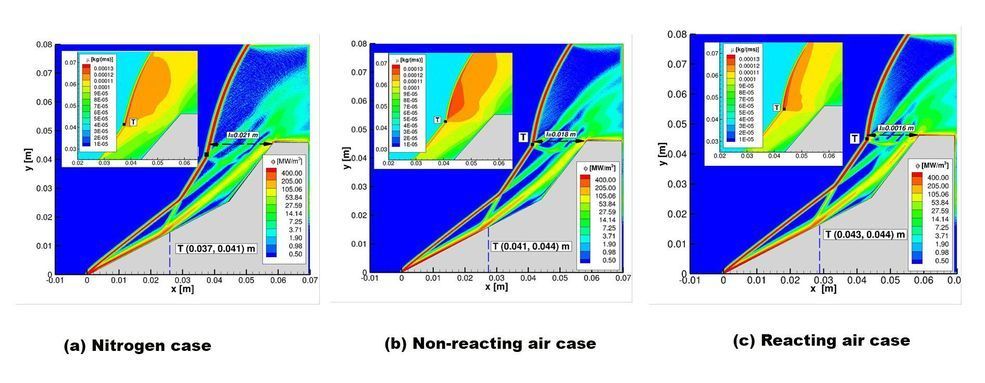While studying the chemical reactions that occur in the flow of gases around a vehicle moving at hypersonic speeds, researchers at the University of Illinois used a less-is-more method to gain greater understanding of the role of chemical reactions in modifying unsteady flows that occur in the hypersonic flow around a double-wedge shape.
“We reduced the pressure by a factor of eight, which is something experimentalists couldn’t do,” said Deborah Levin, researcher in the Department of Aerospace Engineering at the University of Illinois at Urbana-Champaign. “In an actual chamber, they tried to reduce the pressure but couldn’t reduce it that much because the apparatuses are designed to operate within a certain region. They couldn’t operate it if the pressure was too low. When we reduced the pressure in the simulation, we found that the instabilities in the flow calmed down. We still had a lot of the kind of vortical structure—separation bubbles and swirls—they were still there. But the data were more tractable, more understandable in terms of their time variation.”
Levin conducted the research along with her, then, doctoral student Ozgur Tumuklu, and Vassilis Theofilis from the University of Liverpool.
